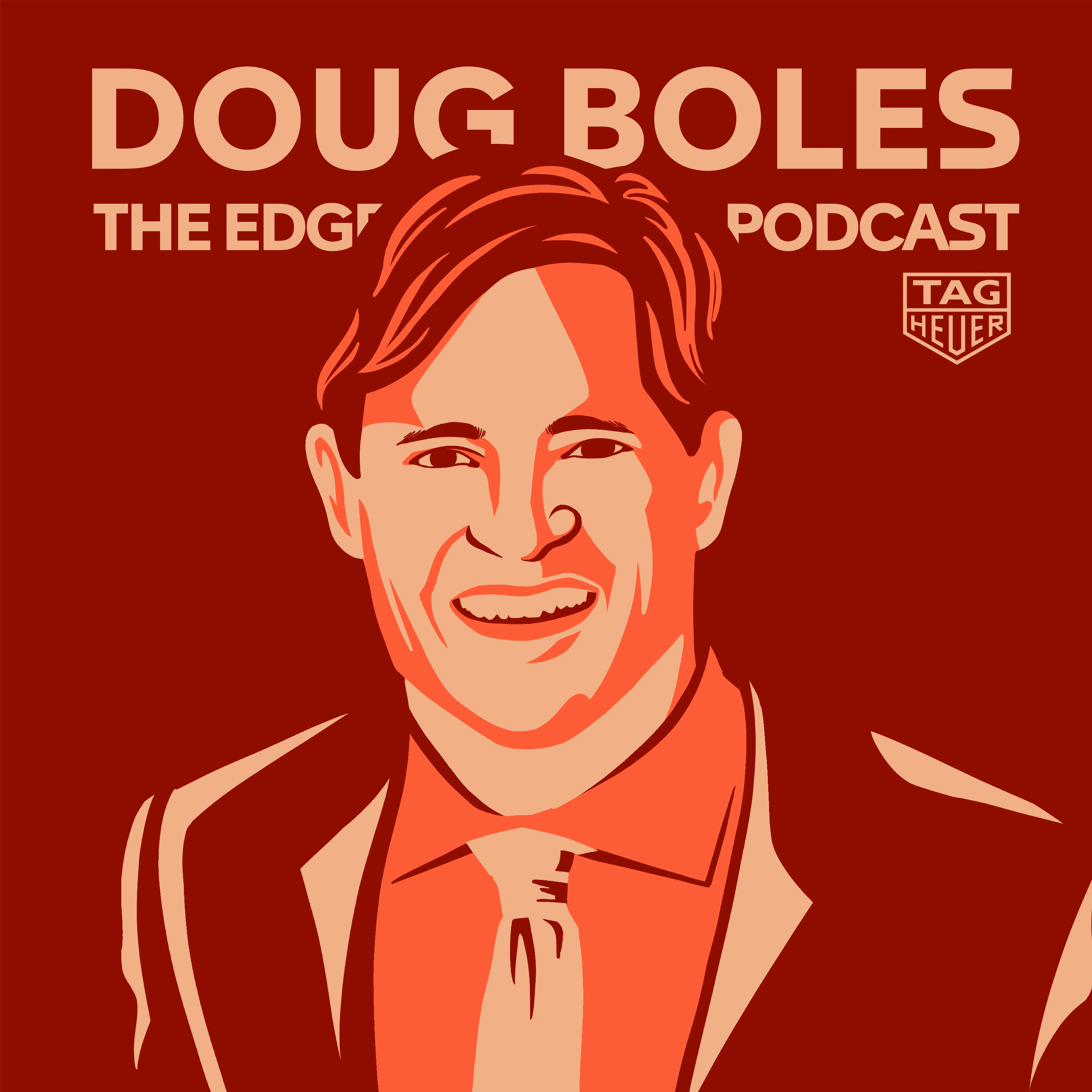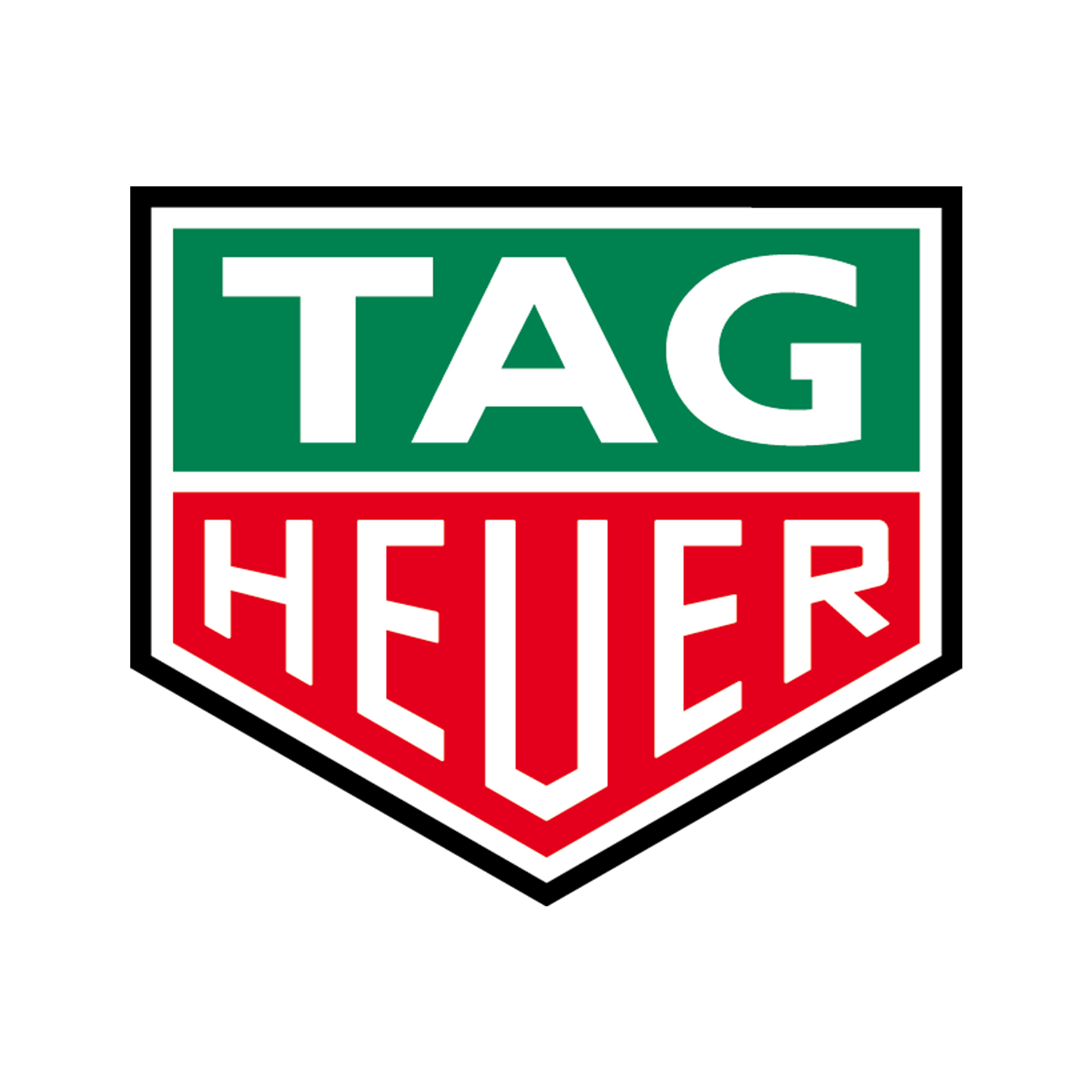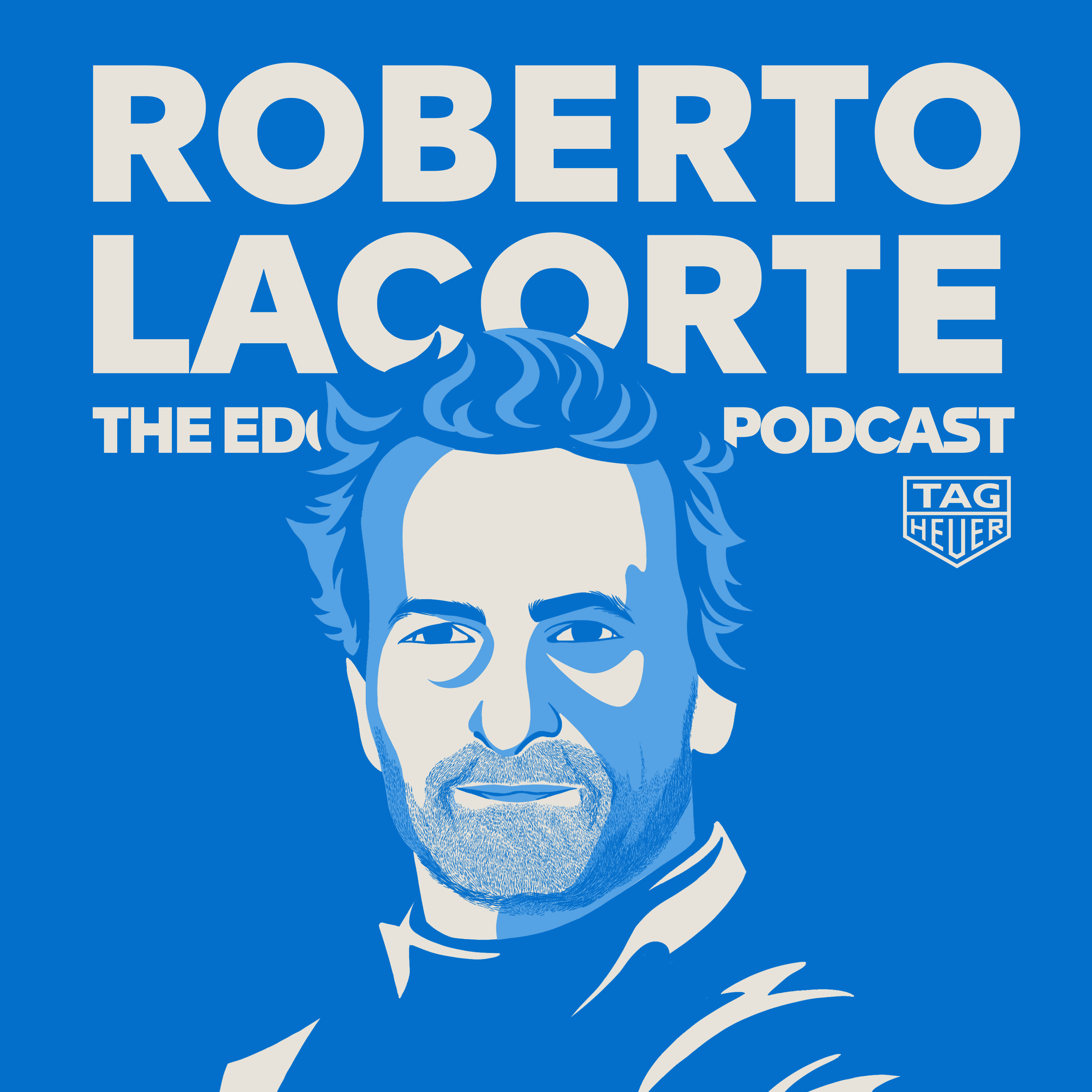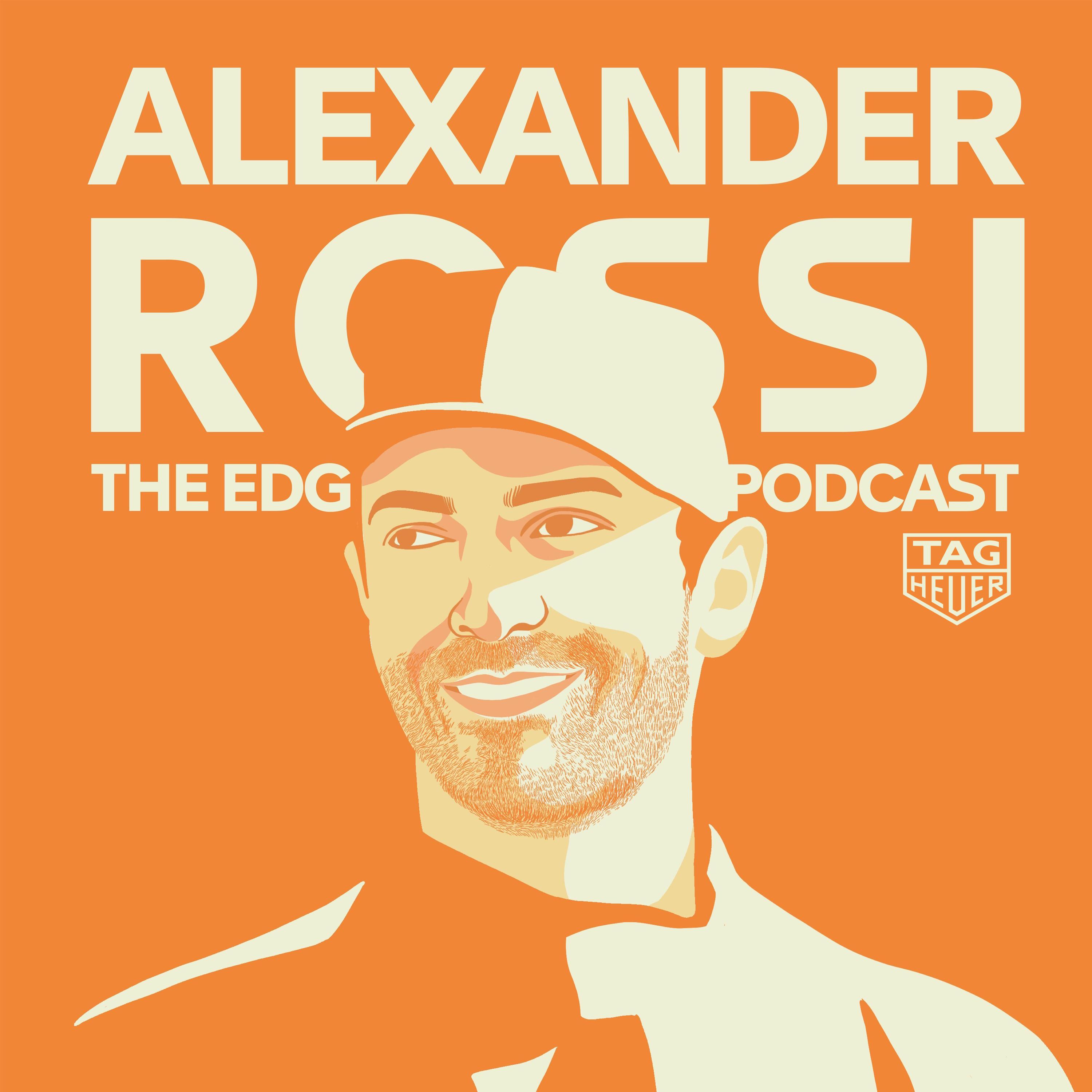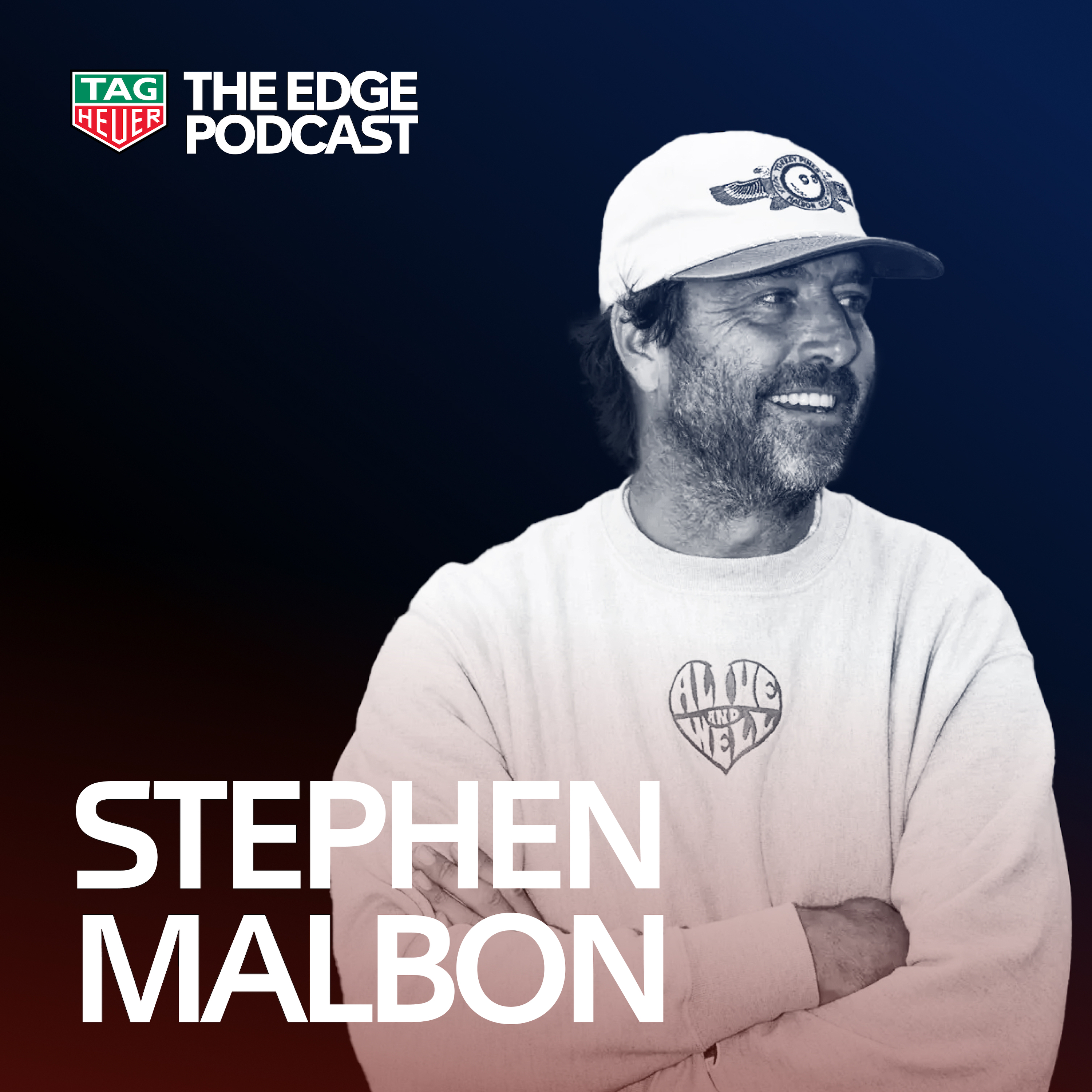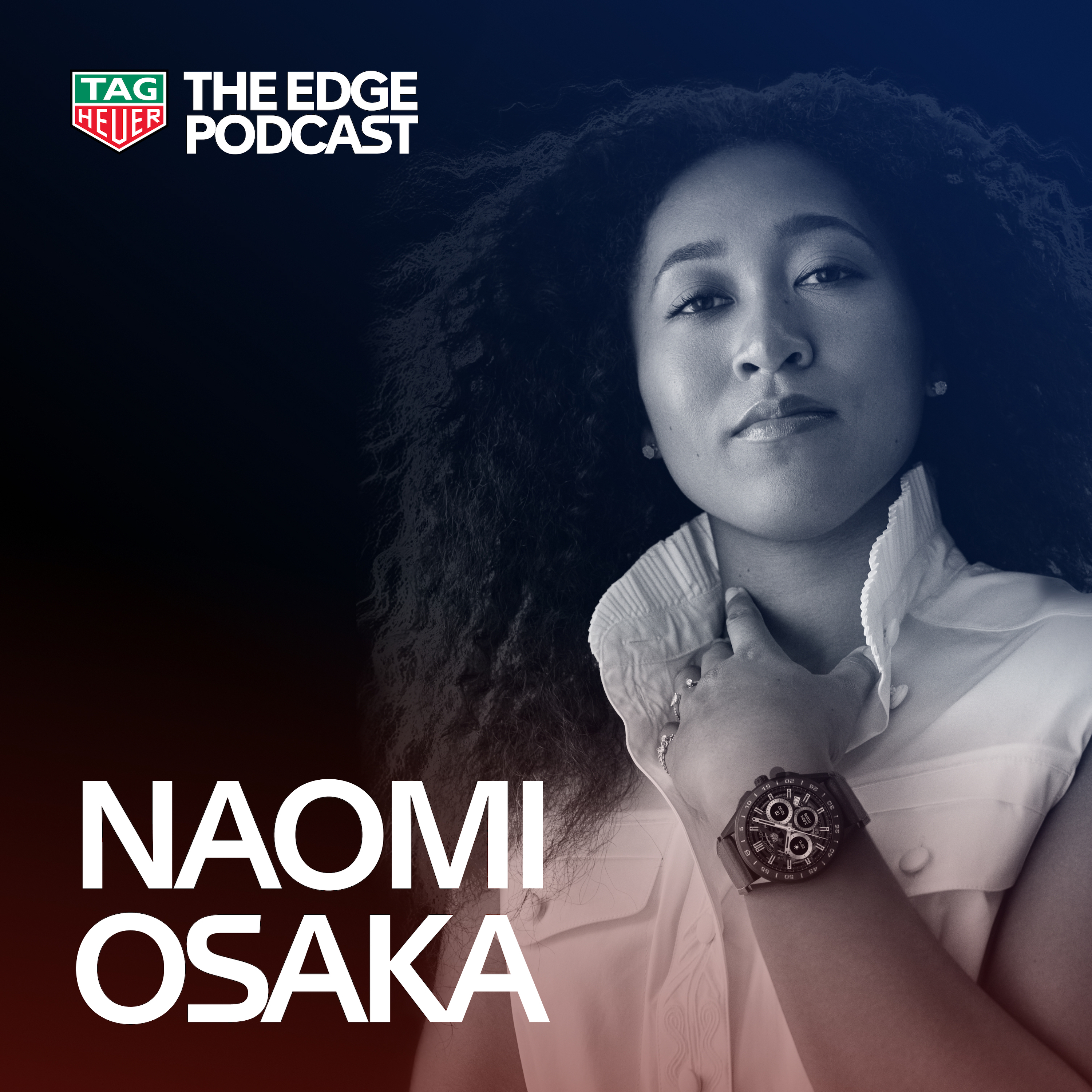Episode Transcript
Speaker 1 00:00:03 Thrilling races. Countless fans won legendary venue. The Indianapolis Motor Speedway has played host to the greatest spectacle in racing the Indy 500 for over a century. Some of motorsport's most iconic moments have taken place on this racetrack purpose, built for speed. We're here with Douglas Bowles, a trailblazing president of the ims, to talk about the innovative technologies that are going to propel the speedway forward. How Motorsport can attract a younger audience, and the deep connection between this iconic institution and its beloved community. I'm Te Vanden brca, welcome to the Edge, A podcast by tag Hoya.
Speaker 2 00:00:50 The hundredth running of the Indy 500 in 2016 was, uh, a really special moment for this facility to be able to get to that point. Obviously a track build in 1909, our first Indy 519 11. We had a couple of years during World War I where we didn't race, and then a handful of years in World War II when we didn't race. That's how come 2016 then becomes our hundredth running of the Indy 500. It was really special for a lot of reasons. One, just celebrating the Indy 500, um, having been in existence that long, a lot of challenges, a lot of worries. I mean, you worried about, okay, is this gonna be the race that everybody gets to? And they say, okay, I'm not going anymore cause I made it to the hundredth, I'm gonna, you know, stay home now. So one of our focuses was not use that as an Indy point, but make sure it was a launching point to continue the growth of the growth of the 500 going forward.
Speaker 2 00:01:34 And, and we actually sold the facility out, which was the first time in history really, that we had done that. We'd sold all of our, our grandstand seats. We had about 240,000 of them that year. We had to add some seats to, to accommodate a lot of folks. And right now we have about 232,000 permanent seats. We added about 8,000, uh, that year. And then we sold about, uh, uh, we sold about 115,000, uh, infield tickets for people to be in the infield, uh, at, at the racetrack. And ultimately we stopped selling. We probably could have put more people in if we'd wanted, but it about 350,000 people here. It was the equivalent of, uh, the size of the second and third largest city in the, in the, uh, state of Indiana together, uh, here at the Speedway. Uh, so it was really, I mean, it was a really special moment to be able to do that. And, um, said an awful lot about our event that it's been around that long. And I, I spent a lot of time wondering, wondering what Carl Fisher would think, who founded the Speedway in 1909. If, if you could bring him back and say, Hey, look, you started this, this place in 1909 and the race in 1911, look where it is today. I, I think he'd be pretty astonished to think that, uh, the 8,500 still was in existence.
Speaker 2 00:02:44 There's so many moments that have happened since I've been president that, that I that stand out when I start thinking about 'em. You know, the first thing I think about is kind of crazy. But, uh, when Moto GP was running here, the, the, the Red Bull, uh, the Red Bull Parachuters were here, and they asked me to jump into the Speedway from 10,000 feet in parachute in and land inside the speedway on, on, uh, motor GP weekend. There's nothing like jumping out of an airplane and seeing your racetrack just get bigger and bigger and bigger and ultimately land there. I wear a suit and tie every day to the Speedway because when they made me present, I said, the brand deserves a tie. You know, I'd rather be in a t-shirt and a pair of jeans, but this reminds me every day of the history that, that I, that I represent and that I have to, uh, focus an awful lot on our customers and our fans.
Speaker 2 00:03:27 And it's all about that and putting that tie on. So I, so landing with the tie, having one of our local Olympics skiers who just come home from the Olympics, uh, with a bronze medal and bringing him to the speedway and towing him around the speedway and the snow so that he could do a back flip over the yard of bricks at 50 miles an hour, um, was an unbelievable moment. You know, my stepson qualifying for his first Indy 520 13 Tony Canon winning the 2013 Indy 500 after so many years, my stepson win, leading his first Indy 520 21. I mean, I could go on and on with moments that I couldn't decide which one or the other I, you know, really is, is the one standout moment. It's, it's an amazing, it's an amazing place and amazing history, and I've, I've gotten to do some really, really fun things, um, and see some amazing things as part of it.
Speaker 2 00:04:17 Well, the track was first built in 1909, and part of what makes us special is our history and tradition. And those are the elements that generations of fans keep coming back. So there are fans that come to the Indianapolis 500 who had grandparents or great grandparents are here who were here for our first races in 1909, or our first Indy 500 in 1911. And as we start thinking about the facility, a lot of our fans only come one time a year, and you want them to walk in and think, wow, this is the facility that I fell in love with, or that my dad fell in love with and introduced me too. So we have to be really careful. But in a world where new stadiums, sporting stadiums are billion built all the time, and modern amenities are what folks expect, we have to find a way to keep that history and tradition in the specialness of the speedway being what it is, but also offer people what they're used to when they come to different amenities.
Speaker 2 00:05:07 So whether that's access to wifi or ways to order your concessions from your grandstand seat or video board so that you can stay connected with the action on the track. We have to work through all those, but we do it in a way here where it still feels like it belongs to the Speedway. In 2016, we did a big massive renovation here. We spent about a hundred million dollars on the facility, and most of those renovations fit very nicely into the industrial feel that you have when you come to the Indianapolis Motor Bway. But it's something we have to think about every day, balancing what makes us special, our history and tradition, but with what fans expect when they come to the, some of the newer sporting venues around the world. Think the the first reasons endured is just because of the history and tradition and its roots all the way back into, uh, when the track was built in 1909 and fir and certainly the first Indy 500 in 1911.
Speaker 2 00:05:55 And just how many, um, traditions sort of that re remain the same. It's the 500 miles, it's the Yard of Bricks. It's a, you know, it's the same exact same layout as it was in 1909. Nothing's changed other than we have asphalt on top of the bricks that were there in the fall of 1909. So you're racing on the exact same surface in the, or the exact same corners, the exact same layout as they raced 114 years ago. So that's one of the things that makes us so special. And not unlike Lama and Monaco we're more than a race. And, and if you think about racing, there are three events in the world that have a race that happens, but it's really the event that's even bigger than the race. So if you've had a chance to go to La Mall, you know that the racing's awesome.
Speaker 2 00:06:38 But what's really awesome is the event itself and walking around and seeing the people and the traditions that people who've come to that race year over year, over year go through. Same with Monaco, an entire city, that that just becomes the event itself, and it just happens to have a race. And I think that's a lot of why the Indianapolis 500 is what it is. It, it is an event first and a race second, but the, but it's rooted in such history and tradition that it keeps people coming back. You know, 70% of our customer who comes to the Indianapolis 500 doesn't watch another race the rest of the year. Their racing experience all year long is coming to the Indy 500, and then they wait till next year before they engage with racing again. But it's because of the event that it is that that causes them to, uh, to be here. And that's really what makes it the greatest spectacle in racing are the 325,000 people that are here. It's, it's so much more than the racing. It's all about all the pomp and circumstance leads up to it. And then, and how each of those 325,000 people celebrate that day.
Speaker 2 00:07:40 For us fans, it's a lot awful lot like, um, you know, if you're an NFL fan and you think of the Green Bay Packers and just how historic that that team is, and you go to those stadiums that cities have grown up around them and people, you know, park in front yards and camp in front yards of the neighbors who are literally right outside the gates. And that's what happens here. About 40% of our customer parks on property that the Speedway owns. Uh, but 60% of our customer parks in the front yards of neighbors, uh, just to our west and to our north mostly. And, and a lot of those folks camp out and stay at people's houses or sleep in their cars in the yard. So this whole, the whole town is about 12,000 people the bulk of the year. But then on race weekend, it, it grows to over 325,000, and most of those people are staying right in somebody's front yard.
Speaker 2 00:08:27 Well, the town of Speedway is called Speedway because the Indianapolis Motor Speedway is here. It was, it was incorporated in 1914, shortly after the Speedway was built. You know, Speedway was five years old at that point in time. So much of, uh, so much of our history, I is because of the folks that lived in the town and our town forefathers, and so many of the people that still live there today, uh, are people who maybe grew up in Speedway and, and moved back there because of, of how important this the racetrack was to, to their upbringing. But I tell people all the time, one of the, one of the things that is the special sauce about the Indianapolis Me Speedway, it's the neighborhood, it's it's main street of Speedway and the, the local restaurants and bars and, and, and areas that just embrace our race so much and help us welcome people from around the world. So for race day this year, we'll have over 35 countries represented in all 50 states in the US are represented in our grandstand. And so many of them will spend their time in the town of Speedway. So without the town of Speedway, this event doesn't work. It's a great partnership and at some level that's true for the city of Indianapolis, but it's certainly true for our neighbors In the town of Speedway,
Speaker 2 00:09:36 We were, when we were dealing with, uh, COVID in, in 2020, we, uh, were trying to find a way to continue the IndyCar series, and NASCAR was trying to find a way to continue their series. And as we got started, we needed some dates, they needed some dates, and we decided to partner with, with NASCAR and had IndyCar, NASCAR do a double header at the Speedway in 2020. We actually ran on Saturday with the Xfinity Cars and IndyCar on the road course, and then overnight we converted the racetrack into the oval and hosted the Brickyard 400. And it was a great opportunity for us to test the road course for stock cars. And then in 2021, we decided we would make a move to have that entire weekend on the road course, including the stock cars. So we went from the Brickyard 400 to the, to the Verizon 200, which is 200 miles on the road course with the Cup cars.
Speaker 2 00:10:22 And that's been an interesting experiment, and I've told people all along, I think there'll be a time that we go back to the Oval for the Cup cars and get a Brickyard 400 to come back and, you know, next year will be the 30th anniversary of, of our first Brickyard 400 that Jeff Gordon won. So that, you know, that could be a year that we could decide to go back. But it really was born out of necessity for NASCAR and IndyCar to come up with some dates and work together. And then it was also a, a great experiment for us to see how the Cup cars through the Xfinity race that year might, um, you know, might work on the, on the road course. So it's been a lot of fun older drivers. And the reason that Brickyard 400 was so successful when it first was announced was that it was an opportunity for NASCAR drivers to compete on the same oval that, you know, AJ 41 14, Indianapolis 500 s on, or, or Jimmy Clark won on, or, or some of the historic names in our sport, and they were running on that exact same racetrack.
Speaker 2 00:11:12 And that was really, really special when we put 'em on the road course, which is a combination of our oval and an infield road course, and you go in the opposite direction that you do when you're in oval configuration, it, it took something away, I think, especially for those old timers who wanted to be able to say, Hey, I won on the same track that Ray Haroon, Ray Haro went on, or, or that Jimmy Clark or AJ Foyer, or Johnny Rothery, Bobby Unser, you could just go on with the iconic names, Elio Castro, Nevis. So, um, you know, I think there's some nostalgia to that and, and I think the beauty of this facility is it's got some flexibility. So we could even get to a point where, you know, maybe we're rotating the NASCAR race where they're on the, on the oval some years and on the road course other years, and we just have to sit down with NASCAR and make a decision on what we wanna do in 2024 and then what we want to do beyond that.
Speaker 2 00:11:59 Well, the 500 Festival was an organization that Tony Holman, who owned the Speedway at the time, set up about 70 years ago, um, to help promote, uh, the Indy 500, but more importantly, to, to really promote the community and, and engage community leaders who might not be race fans to get them engaged in, in the race. And, and realizing that having the race here, whether you attended or not, was a good thing for our community. And over time, much like the Indy 500, the 500 Festival has some, some of its pillar events that happen every year. So our month of May really kicks off with a half marathon that starts in downtown Indianapolis. And about halfway through that marathon, you actually run around the Indianapolis Motor Speedway Oval, and then you end up back downtown for that 13.1 mile a half marathon. They do a parade the day before the Indianapolis 500 that has about 300,000 people that show up in downtown Indianapolis for a parade that includes the 33 drivers as they, uh, are getting sort of, uh, sent off from that point to race day the next day.
Speaker 2 00:13:00 And then we have a variety of community events. One of the strongest ones that we do that we really try and encourage the festival to invest in, and that's important to us is, is how are we reaching out to young kids? So we have a pretty robust program for kids who are 10 or 11 years old and in school around the state that's, uh, a teaching curriculum that talks about stem, but also talks about geography and history and a lot of things, uh, especially Indiana history, uh, using the Indianapolis Motor Speedway and, and its history is a way to help engage that. So our focus really with that are programs that, that, uh, honor our community, uh, reach out to folks who wouldn't necessarily and may never be race bands, but want them to feel good about the 500. And then maybe the most important thing we do, and it's one that's not noticed as much, but Memorial Day weekend is when the Indy 500 takes place.
Speaker 2 00:13:46 So it's really important that we celebrate the men and women who've served, uh, in our armed forces. And we have a, uh, have an amazing, um, memorial service for a gold star family. So families of people who have lost, um, sons or daughters, uh, to conflicts, uh, over the last several years. And we honor those families and those, those men and women who've served our country. And that's a real, it's a little bit somber way to go into the weekend, but it's also a reminder that that Memorial Day weekend, uh, has a much bigger meaning than what happens on track here at the Indianapolis 500. Mm.
Speaker 1 00:14:15 That's really important. I mean, there, there's a, as you said, there's a significant impact on the economy, um, and the community, uh, by the, the track and by the events that you host. How do you work with local businesses to, and community leaders to ensure that the impact is positive and importantly sustainable
Speaker 2 00:14:37 So that the economic impact in Motorsport across the board, the state of Indiana as well, in excess of a billion dollars a year that the Motorsport community brings, uh, to our state most of that in central Indiana. A lot of the work that we do with our, with the city of, of Indianapolis and the town of Speedway and the state of Indiana, is how do we use the Indianapolis Motor Speedway to bolster those businesses? The obvious ones are, uh, the, the, the tourism side of things, the hotels, the rental cars, the restaurants, uh, that take place or where you're, where you're going to out to eat if you're visiting on one of our event weekends. I spend an awful lot of time with the businesses on Main Street, on events that aren't the Indianapolis 500, which has a huge impact, but some of our smaller events and making sure that what we're bringing to the facility to compete here is great for this facility.
Speaker 2 00:15:22 But we also look through the lens of is it good for our community? So I spend an awful lot of time to make sure what we're doing here is driving traffic to the businesses that are, that are close by. So that's important. And then the NTT IndyCar series is owned by Roger Penske, who also owns the Indianapolis Motor Speedway. And so many of those teams are based here in central Indiana, and that creates its own little economic impact from, you know, either high paying great jobs for team, uh, team personnel, as well as suppliers who are supplying to, uh, supplying the IndyCar series. So that is a, that's a really big focus for us is how do we make sure that the economic engine that is motorsport is sort of, uh, uh, we're sort of the oil and the fuel, if you will, uh, that drives it and it starts right here with the Indianapolis 500 and the Indianapolis Motor Speedway. But then how do we use that, uh, to grow the rest of the industry?
Speaker 1 00:16:08 What challenges do you see on the horizon for the Motorsport industry in a broader sense, and how do you intend to navigate them?
Speaker 2 00:16:16 Yeah, I, I, the biggest challenge I see for the, for the motorsport industry is probably one of the biggest challenges in the automobile industry. You know, youth today, uh, the car isn't too youth today as it like it was to, to me, I, I'm 56 and you know, I got my freedom when I was 16. So at 16 years old, you could get your driver's license. I couldn't wait for that day to take my driver's test and, and to, and to go forward, you know, youth today, their freedom really probably starts with their mobile device when they can connect with their friends. And there's so many things that they can do virtually that they don't have to have a car to go hang out with friends. They don't have to have a car to see a movie, they don't, all those things that, that it really took a car, um, back in the day to, um, connect with and back in the day, a car could be activity itself, you know, working on cars, modifying cars, and today's cars are so technologically advanced that you just don't see that like it is.
Speaker 2 00:17:09 So, so our biggest challenge is how do you connect the automobile that races in the Indianapolis 500 or at Monaco or Lamar or Daytona? How do you connect that automobile to the young generation who may not have that natural connection to it? So a lot of what for us is focusing on the technology that is the race car. So, so much of that car is essentially a rolling computer and the information that it can tell, the stories, it can tell, yes, focus on the personalities behind the wheel. A lot of them younger, how do we connect them for our Indy 500, for example, we have a, a concert on race day in the infield where 25,000 young adults under the age of 30 come for an edm, uh, concert that takes place here and could care less that there's 300,000 people sitting in the grandstand watching a race.
Speaker 2 00:17:53 They're there to, to party. And, uh, and, and to have fun with the music. The good news for us is I know who those customers are, who those kids are, and we can begin to me message to them and hopefully as they grow older and decide, Hey, I don't want to dance from 7:00 AM to 3:00 PM but I do want to come to the Indianapolis 500 cuz it's what I do on Memorial Day Sunday. Uh, hopefully we can convert them to become, to becoming race bands. But I I, I really think our biggest challenge is how do we keep, uh, the relevance of, uh, the automobile, uh, in a way that, uh, it's connecting with young kids who may not think of the automobile right away as, as that freedom and that connection, uh, that connective tissue that it, that it was for so many of us. It's
Speaker 1 00:18:30 Fascinating. I I'd never heard it put like that or thought about it like that. And I mean, I guess that's a challenge faced by any <laugh> physical event business effectively, because you're right. I mean, you, you can do everything virtually and it's, it is telling those stories and kind of bringing it to life in a way that connects to them really interesting. Sponsorship and branding are crucial elements of any successful sport enterprise. How do you choose the partnerships, um, and companies that align with the values of the most Speedway? What are the criteria?
Speaker 2 00:19:06 It's a great question because sponsorship, it could be really easy if you just took a sponsor because they were going to write you a check or because they were going to activate in the marketplace in some way, um, that, that might be beneficial to you. But I think one of the things that's really important to us at the Indianapolis Motor Speedway is aligning with partners that, that do both of those things, but more importantly, uh, have aligned ideals and, and, and have aligned customer base at some level. Um, so you think about a lot of our, lot of our partnerships that we have, um, have a deep connection in motorsport or our super iconic brands in and of themselves. So if you think about, um, Firestone for example, obviously is endemic to the automobile and, and motorsport, but they're also really focused on advancing technology.
Speaker 2 00:19:52 So the racetrack was designed in 1909 to test the new technology of the day. So the idea that we have a partner who was actually here in 1911 when we ran our first Indianapolis 500. In fact, uh, the tires on that winning car were Firestones. But the fact that they are still with us today and we're focused, not so much on, we're certainly focused on the, on the tires on the car, but we're focused on how do we find a more sustainable solution in tires? How are we finding a better way, uh, to, uh, to, uh, get rid of tires once they've been used? How do, how are we finding better ways to transport, uh, that that technology can then be applied in the automotive, um, the automotive industry? So that's an important one for us. Um, somebody like Tag Howard, you know, TAG is a, is a brand that is known for its, uh, for its perfection, uh, and for, its, its timing the way they, you know, the, so the reliability of it.
Speaker 2 00:20:39 So having them as our, as our official timepiece, uh, partner and, and having them write on, one of the things we've never done before is branded the walls of the Speedway and we've branded the start finish line walls of the Speedway with tag because it is, it fits so well, it fits the brand, it is the right icon for the brand. And it talks about, you know, it is, you know, they talk about their precision and, and just the quality work that they have. And when you win the Indianapolis 500 and you cross that yard of bricks, it's all about that. So that's another brand that, that really fits well. Uh, with our partnership, our, our beer partners, same thing is all about how do you celebrate iconic moments. Um, and, you know, they help us to celebrate that in the market. So it's really important that, that there's an aligned organic connection. It's pretty hard when you have to force yourself to talk about a brand, um, that maybe you don't totally believe in or you don't use or isn't helping you make your facility better. So that's really the first step. If we feel like they're helping us do those things, then we can figure out the, the financial piece and the activation piece to make something work.
Speaker 1 00:21:38 <laugh>, having worked for magazines for years, I feel your pain on trying to align with brands you don't believe in <laugh>. So I'm, I'm just interested in going back slightly to what you were saying about engaging younger people. Have you kind of started looking into things like VR or AI and how those technological advances can shift what you are doing or engage them in a more meaningful way?
Speaker 2 00:22:02 You know, keeping up with technology, especially the technology that gives people experiences without having them actually have to be in those experiences, is something we have, uh, really started paying attention to. Whether it's as simple as how are we being better in the, um, gaming world so that people have that real life experience or virtual experience of driving a race car on the track. What's it like to be a race car driver? That's a really important piece for us as we, as we continue to, uh, continue to work through that and with, with technology as it changes. Um, so we want people, if you're buying a ticket to the Indianapolis Motor Speedway, we want you to be able to go on our website and pick the seat you want and go sit in that seat and be able to know what that seat's gonna be like, understand how you're getting there, really feel it before you, before you get there.
Speaker 2 00:22:51 So instead of that flat, uh, one-dimensional, uh, graphic that you used to see, we're trying to make it much more three-dimensional and, and an experience so that you know what you're getting when you're, when you're getting there. You know, before the last few years, if a customer said, Hey, I think I wanna buy a seat in J and the 14th row in section seven, you know, the only way really for us to show it to them is we're for one of the staff members likely me to go out to their seat and take some pictures for 'em and send it to 'em so they get a sense of what it was like. And certainly the technology. Now today, I still do that, but it keeps me from having to do that quite as often as I had to. And then when you start thinking about ai, I don't think we're quite there yet on exactly exactly how AI is gonna impact our sport.
Speaker 2 00:23:31 We worked with the state of Indiana, um, in 2020, in 2019 actually, and announced a, a thing called the Indie Autonomous Challenge, where we took indie lights, cars, which are the cars just a step below the indie cars. So as drivers are training to get to the IndyCar level, they run those cars, cars, cable, WVA 190 miles an hour. And we partnered with a bunch of universities around the world who came in and everybody got the same platform in terms of the car and the setup of the cars. And what they had to do was they had to create the brains that drove the car, but it wasn't just drive the car around a set, uh, a set course, it was create the brains that would drive them around the set course, but also be able to drive around the set course with another car who was just thinking the same way.
Speaker 2 00:24:11 So they had to be able to, to predict what the car near them was gonna do. Um, and that, that in the autonomous challenge continues to this day. We had the first races in 2020 and that's still happening. And that's probably for us, the forefront of, of how is AI on the autonomous vehicle, how is a lot of that gonna impact racing going forward? Obviously we're in the, uh, entertainment business and part of what makes our racing special are the personalities who drive those cars. Uh, so I don't see, I don't see autonomous racing taking over the Indianapolis 500 anytime soon, but I do see some of the learnings we have from there, helping from a safety technology, if you add a brain inside your car that could tell you if somebody was about to pass you or help you see things that you might not be able to see driving at 230 miles an hour, I think those things could be helpful in the future.
Speaker 1 00:24:57 I guess there's a fine line between that and it becoming too assisted. Right. And you'll have people kind of pushing hard against that too, so there's there's a fine line to tread.
Speaker 2 00:25:07 Yeah, I mean, what's really made us special is it's that, that test of man and machine, so, you know, trying to push the limits of both the physical limits of the human body as well as the physical limits of, of the machine that they're strapped to. And, and that's what, that's what makes it, that that's really what makes it special. So you're right, I think there does become a point where if you start taking the person out of it, it does, uh, yeah, I think it does impact a little bit for the way we, uh, the way we engage our, you know, engage our fans or the way our fans stays engaged with the, with the race drivers and the race itself.
Speaker 1 00:25:37 Yeah. Douglas Bowles, thank you so much for joining us, um, at the Edge. It's been wonderful speaking to you. Thank you.
Speaker 2 00:25:43 Uh, thanks so much for having me.
Speaker 1 00:25:53 Thank you for listening to this episode of The Edge. If you'd like to listen to more episodes like this one, have listened to our interviews with racing drivers, max Fain, Sergio Perez, and Simone Desel. Vero. If you enjoyed this episode, don't forget to subscribe and leave us five stars. It does make a difference. Thank you so much to Douglas Bowles for joining us. I'm your host, te Van Naka, and I'll be back next month with another episode of The Edge, a podcast by Tao. See you soon.
